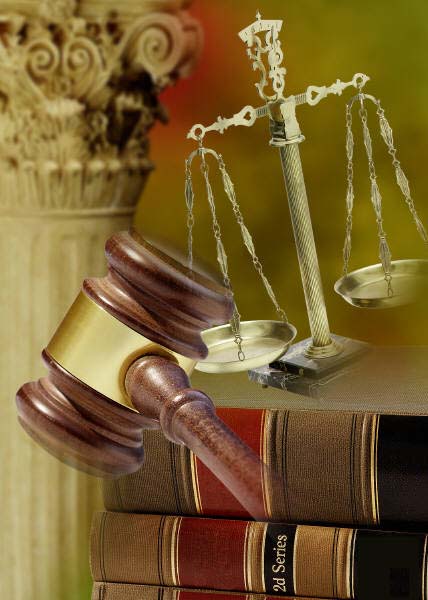As we noted yesterday, Tuesday and Monday, eDiscovery Daily published 74 posts related to eDiscovery case decisions and activities over the past year, covering 62 unique cases! Yesterday, we looked back at cases related to social media discovery, technology assisted review and the first part of the cases relating to sanctions and spoliation. Today, let’s take a look back at the remaining cases related to sanctions and spoliation.
We grouped those cases into common subject themes and will review them over the next few posts. Perhaps you missed some of these? Now is your chance to catch up!
But first, if you want to learn more about what every attorney should know about eDiscovery in 2017, click here.
SPOLIATION / SANCTIONS
As we mentioned yesterday, once again, the topic with the largest number of case law decisions related to eDiscovery are those related to sanctions and spoliation issues (24 out of 62 total cases for 38.7% of all cases covered). Here are the remaining sixteen cases related to spoliation and sanctions that we covered last year, including one where the spoliating party received punitive sanctions of $3,000,000:
Beep, Beep! Terminating Sanctions against Defendant for Spoliation Affirmed on Appeal: In Roadrunner Transportation Services, Inc. v. Tarwater, the Ninth Circuit affirmed the district court’s entry of default judgment and award of attorneys’ fees in favor of the plaintiff, ruling that the district court did not abuse its discretion by entering default judgment as a sanction for the defendant’s deletion of data from his laptop computers. The Ninth Circuit also affirmed the district court’s award of $325,000 in attorneys’ fees to the plaintiff and also affirmed the lower court ruling to limit the plaintiff’s compensatory damages to the four customers specifically identified in the First Amended Complaint.
Defendant Sanctioned for Loss of Emails During Provider Switch, But No Sanction For Wiped Hard Drive: In Core Laboratories LP v. Spectrum Tracer Services, LLC et. al., Oklahoma District Judge Vicki Miles-LaGrange granted the plaintiff’s motion for sanctions for emails that were not preserved during an email provider switch via an adverse inference instruction, but denied the plaintiff’s motion for sanctions for deleting files and for wiping the computer of one of its employees.
Failure to Extend Preservation Hold to Headquarters Does Not Lead To Adverse Inference Sanction: In Botey v. Green, et. al., Pennsylvania District Judge Robert D. Mariani denied the plaintiff’s request for an adverse inference sanction for the defendants’ failure to preserve trucking logs related to an accident between the plaintiff and a truck driver working for the defendant’s company, but did agree not to allow the defendants to prove the contents of the destroyed documents by other means or argue their contents in dispositive motions or at trial.
Court Rules Lack of Bad Faith in Denying Sanctions for Defendants’ Deletion of ESI: In Martin v. Stoops Buick, Inc. et. al., Indiana Chief District Judge Richard L. Young ruled that the plaintiff did not carry her burden of proving that the defendants’ deliberately destroyed evidence in bad faith; therefore, he denied her Motion for Sanctions Against Defendants for the Spoliation of Evidence.
Defendant Requests Terminating Sanctions for Plaintiff, but Court Opts for Lesser Sanctions: In Applied Underwriters, Inc. v. American Employer Group, Tennessee Magistrate Judge C. Clifford Shirley, Jr., ruling on several motions, granted in part and denied in part the defendant’s motion for sanctions, agreeing that the plaintiff’s numerous discovery deficiencies warranted sanctions, but not the dismissal that the defendant requested, opting instead to require the plaintiff to pay attorney’s fees for filing the motion.
Court Sanctions Plaintiff for Failing to Preserve Customer Communications: In Matthew Enterprise, Inc. v. Chrysler Group, LLC, California Magistrate Judge Paul S. Grewal, in one of his last orders before leaving the bench, determined that there was “no question that spoliation has occurred” and granted the defendant’s motion for sanctions for spoliation, “in its entirety, except for the proposed remedy”, opting for a middle ground between the parties’ proposals on what the remedy should be.
Appeals Court Reverses Terminating Sanctions Against Plaintiff for Deletion of Emails: In Flagship Theatres of Palm Desert, LLC v. Century Theatres, Inc. et. al., the Court of Appeals of California, Second District determined that the trial court “abused its discretion” by “granting terminating sanctions in a case in which the prejudice to the non-offending party can be ameliorated by a more limited remedy”. As a result, the appeals court reversed the judgment and remanded it back to the trial court with a lesser sanction, prohibiting the plaintiff “from offering evidence of acts, events, or communications occurring during the period” when one of the plaintiffs deleted emails.
Court Assesses $3 Million Punitive Sanction to Defendant for “Bad Faith” Deletion of Emails: In GN Netcom, Inc. v. Plantronics, Inc., Delaware District Judge Leonard P. Stark, finding a high degree of fault, bad-faith intent to deprive the plaintiff of responsive documents and prejudice caused to the plaintiff’s case, imposed several sanctions against the defendant, including “punitive sanctions in the amount of $3,000,000” for the “intentional and admitted deletion of emails” by the defendant’s Senior Vice President of Sales.
Court Declines to Sanction Defendant for Deletion of Former Employee’s Email Account: In Moore v. Lowe’s Home Centers, LLC, Washington District Judge Robert J. Bryan denied without prejudice the plaintiff’s Motion for Sanctions for Defendant’s Willful Spoliation of Evidence for deleting her email account after she was terminated, finding a lack of duty preserve or bad faith on the defendant’s part and minimal (if any) prejudice to the plaintiff.
Defendant Receives Terminating Sanctions and More for “Persistent Contemptuous Behavior”: In Teledyne Technologies Inc. v. Shekar, Illinois District Judge Ronald A. Guzmàn, finding that the defendant “has failed to purge himself of contempt for the repeated refusal to comply with this Court’s orders”, entered judgment against the defendant, dismissed his counterclaims, and directed him to pay the plaintiff’s reasonable attorney’s fees and costs incurred as a result of having to pursue relief for the defendant’s “persistent contemptuous behavior”.
Appeals Court Upholds Default Judgment for Discovery Violations, Including Wiping Files from Laptop: In Trude et. al. v. Glenwood State Bank, et. al., a Minnesota Appeals Court affirmed the trial court’s entry of default judgment for repeated discovery violations, including using data wiping software to permanently delete more than 20,000 files from a laptop just hours before it was turned over for forensic examination.
Dropped Cell Phone Does Not Lead to Spoliation Sanctions Under Amended Rule 37(e): In Shaffer v. Gaither, North Carolina District Judge Max O. Cogburn, Jr. ruled that the sanction of dismissal requested by the defendant for the plaintiff’s lost text messages was disproportionate and denied the defendant’s Motion for Sanctions.
Searching Only File Names is Not the “Safe Way” to Avoid Sanctions: In Rodman v. Safeway, California District Judge Jon S. Tigar ordered the defendant to pay plaintiff’s Class Counsel $688,646 as a discovery sanction under Rule 26(g), ruling that “failure to search within the contents of the legacy drive constituted an unreasonable inquiry”, but denied without prejudice the plaintiff’s request for a negative jury instruction.
With No Proof of Duty to Preserve or Bad Faith, Plaintiffs’ Request for Sanctions is Denied: In Reyes et. al. v. Julia Place Condominiums Homeowners Association, Inc., et. al., Louisiana District Judge Carl J. Barbier, in denying the plaintiffs’ request for sanctions, stated that the plaintiffs “have failed to produce sufficient evidence proving that [defendant] Parkview had a duty to preserve the ledgers, that Parkview acted in bad faith in destroying the ledgers, and that the destroyed evidence was relevant to Plaintiffs’ claim”.
Defendant Sanctioned for Spoliation of Physical Evidence, But Not ESI: In Reed v. Kindercare Learning Centers et. al., Washington District Judge Benjamin H. Settle (yes, that’s his real name!) granted the plaintiff’s motion for discovery sanctions with respect to spoliation of physical evidence in the form of the facility where the plaintiff worked, but denied the plaintiff’s motion with regard to spoliation of ESI.
Was Spoliation Intentional? Court Will Let Jury Decide: In Cahill v. Dart, Illinois District Judge John Z. Lee adopted, with modifications, the Report and Recommendation of Magistrate Judge Cox regarding the plaintiff’s motion to sanction the defendants for destruction of evidence, indicating that Judge Cox’s proposed sanction would be imposed and also that the jury would be informed that the defendants failed to meet their duty to preserve video, giving the plaintiff the option to argue to the jury that the failure to preserve the video was intentional.
Want to take a look at cases we covered the previous five years? Here they are:
- 2015: Part 1, Part 2, Part 3, Part 4
- 2014: Part 1, Part 2, Part 3, Part 4
- 2013: Part 1, Part 2, Part 3, Part 4
- 2012: Part 1, Part 2, Part 3, Part 4
- 2011: Part 1, Part 2, Part 3, Part 4
So, what do you think? Did you miss any of these? Please share any comments you might have or if you’d like to know more about a particular topic.
Disclaimer: The views represented herein are exclusively the views of the author, and do not necessarily represent the views held by CloudNine. eDiscovery Daily is made available by CloudNine solely for educational purposes to provide general information about general eDiscovery principles and not to provide specific legal advice applicable to any particular circumstance. eDiscovery Daily should not be used as a substitute for competent legal advice from a lawyer you have retained and who has agreed to represent you.








